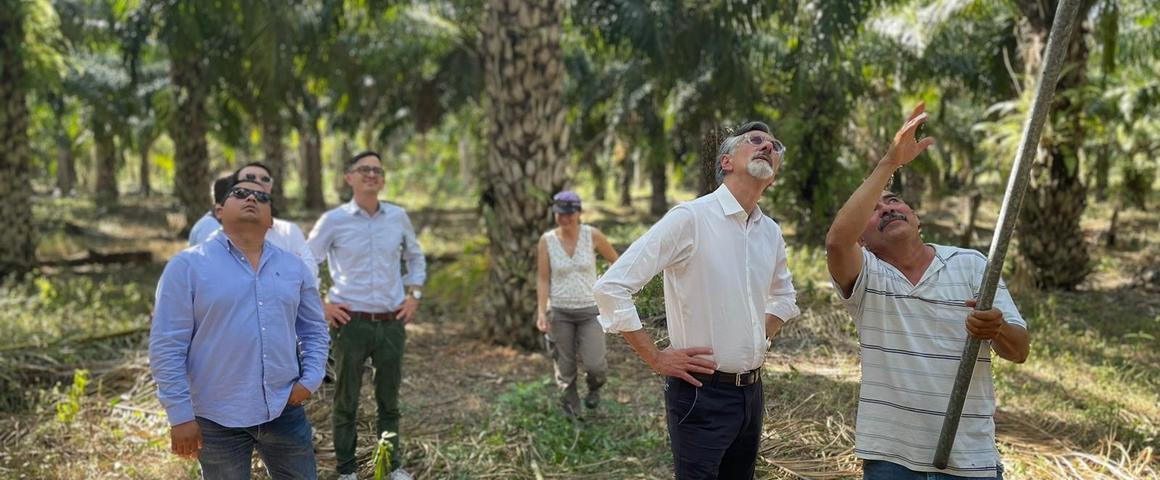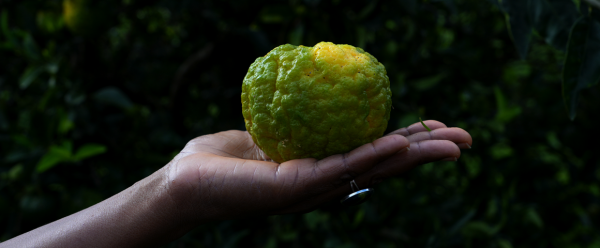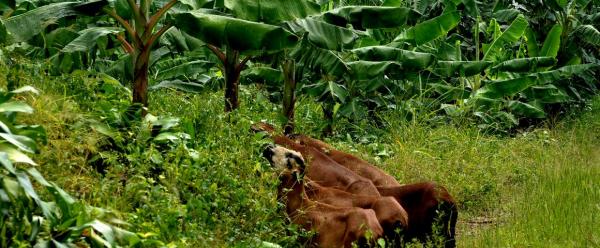Science at work 19 December 2025
- Home
- CIRAD news
- News
- Oil palm plantations and agroforestry in Mexico
When oil palm plantations restore biodiversity

A field visit to an oil palm plantation during the launch of the OptiPalMex project. © DR
Ensuring positive impacts both for the environment and for rural communities, in terms of jobs and livelihoods: this is the challenge set by the OptiPalMex project, through support for the development of a sustainable palm oil sector in Mexico. The project area of intervention stretches across the states of Tabasco and Campeche, two regions marked by past deforestation.
In these agricultural landscapes dominated by pastures and fallow land, OptiPalMex aims to develop innovative oil palm cultivation systems. Several solutions involving agroforestry or species associations will be tested across a total of 200 hectares, on different farms.
“In Mexico, the palm oil market is driven by small family farms, with a maximum of 20 hectares each for 94% of these producers”. Laurène Feintrenie is the scientific coordinator for OptiPalMex. A researcher in the Forest and Societies research unit at CIRAD, she hopes that the project will bring about changes in terms of approaches to oil palm plantations. “We want these areas to be productive, of course, but we also want to show that they can serve as tools for landscape restoration. This is the strength of agroforestry systems: they make it possible to reconnect biodiversity on degraded land, while creating favourable economic conditions for local populations”.
Mexico currently imports 70% of its palm oil consumption. OptiPalMex is part of a national policy to reduce imported deforestation, generated by these imports. The oil produced by the project will therefore be used to meet local demand.
Agroforestry and the reintroduction of endemic tree species
Several models will be tested according to the characteristics of plots. In areas liable to flooding, oil palms will be associated with local tree species with draining properties. On other types of land, farmers may opt for “productive” species, such as cacao trees.
“According to the producers’ needs, we can develop either ecosystem services or products associated with palm oil”, says Laurène Feintrenie. “Some species, such as logwood or “palo de tinte”, could serve both purposes”.
Considered in Mexico as an endangered species, logwood is a legume with draining properties. The wood of this small tree is currently used to make fence posts. In the past, however, it was used for its interesting dye properties. A market survey is planned in the context of OptiPalMex to determine whether it has commercial value.
Oil palm plantations as corridors for small wildlife
Prior to OptiPalMex, a research project in southern Mexico highlighted the role of oil palm plantations in wildlife movement. In these deforested areas, plantations provide shady corridors that are used by numerous small mammals and birds.
The areas of intervention of the OptiPalMex project therefore focus on degraded landscapes through which wildlife can no longer move. The ultimate objective is to enable biodiversity to reconnect via these new oil palm plantations.
The OptiPalMex project was launched in 2021, and its second phase has just begun. This stage is more operational, and is financed by the French treasury, receiving 500 000 euros from the FASEP fund (study and assistance fund for the private sector). The company PalmElit is the project leader, and coordinates its actions with CIRAD. OptiPalMex also involves several Mexican partners, in both research and agriculture.



























